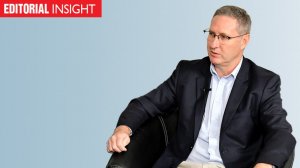Two recent energy events offered glimmers of light amid the intensifying risk of power cuts and the creeping threat of worker and community dislocation as a result of the transition from coal to renewables.
The Joburg Energy Indaba, which attracted much media attention and hundreds of delegates, pointed to a growing awareness among local authorities that, unless they grasp the energy transition nettle, they could be badly hurt by the associated utility death spiral.
It also highlighted rising confidence in the ability of metropolitan councils in particular to begin exploiting the regulatory space available to them to address supply insecurity in a way that could ultimately reduce tariffs for residents and protect their export enterprises from the growing risk of carbon taxes and tariffs.
That space has been liberated largely as a result of changes, made in 2020, to the Electricity Regulation Act, which has opened the way for “municipalities in good financial standing to develop their own power generation projects”.
Johannesburg is arguably behind both Cape Town and its close Gauteng neighbours of Ekurhuleni and Tshwane in the procurement of electricity from independent power producers (IPPs), but its economic-hub status adds a certain gravitas, while its experience with the Kelvin power station brings a level of know-how that the others may not have.
In addition, executive mayor Mpho Phalatse seemed to energise the IPP community with her openness to new ideas and innovation, while City Power chairperson Ambassador Douglas Gibson provided a sense of comfort that the utility was very much alive to the existential threats confronting it and was ready to change course.
Equally, the Mpumalanga Energy Summit demonstrated that that province, too, is fully aware that it can no longer be business as usual.
Yes, coal remains a major source of economic activity and employment, but Premier Refilwe Mtsweni-Tsipane showed a willingness, even eagerness, to embrace the transition, albeit with the caveat that it should not devastate the lives and livelihoods of those individuals and communities that currently rely on coal.
Without question, the so-called just transition will prove far more challenging than procurement by metropolitan councils of cheaper and greener power from IPPs.
Success depends on many moving parts, including a financial framework that prioritises returns to workers and communities ahead of shareholders and bankers. In other words, an entirely different funding architecture, which is going to be difficult to conceptualise, let alone implement.
Nevertheless, there is a genuine opportunity for South Africa and the international community to use the repowering and repurposing of Eskom’s Mpumalanga power stations to build and demonstrate that such a model is indeed possible.
Presidential Climate Finance Task Team head Daniel Mminele has already signalled that a “different paradigm may be required”, with a different approach to issues such as risk allocation, return expectations and investment horizons.
The devil, no doubt, will be in the detail and the clock is ticking to have that detail thrashed out ahead of COP27, which will take place in Sharm El-Sheikh, Egypt, in November.
EMAIL THIS ARTICLE SAVE THIS ARTICLE ARTICLE ENQUIRY
To subscribe email subscriptions@creamermedia.co.za or click here
To advertise email advertising@creamermedia.co.za or click here











